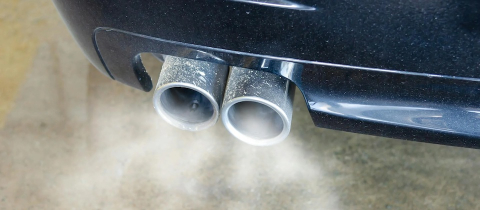Who would have ever thought that rubber tires and laughing gas would be instrumental in getting a privately funded craft into space to claim a prize of ten million dollars? Yet, that is just what happened a few weeks ago. SpaceShipOne, built by the private “Scaled Composites” company made it into space twice in a week to meet the condition that had been set for winning the ten million dollar Ansari X Prize. This was no small feat. You need a lot of power to get a craft up to a height of about sixty-two miles, the minimum height acknowledged to be “space.” Previously, only three countries, the U.S., Russia and China had managed to build rockets powerful enough to get a man up to those lofty heights. The principle behind a rocket is simple enough to understand, but building a rocket that will safely deliver humans into space is a different matter. Isaac Newton described the principle of rocketry very well with his third law of motion. “For every action, there is an equal and opposite reaction.” Just think of a balloon that is inflated and then released. The air molecules escape, that is the action; the balloon takes off in the opposite direction, that’s the reaction. The faster the molecules escape and the greater their combined mass, the faster the balloon, or vehicle, travels. Rocket engines contain a fuel which burns when combined with an oxidizing agent. The products of combustion then scoot out of the engine, propelling the vehicle in the opposite direction.
In the case of SpaceShipOne, the fuel was “hydroxyterminated butadiene,” which basically is what rubber tires are made of. And of course we know that rubber tires can burn. For combustion to take place though, oxygen is required. This was supplied by nitrous oxide, better known as laughing gas. The fact that nitrous oxide can break down to yield oxygen has been known for a long time. During the Second World War, nitrous oxide was piped into some fighter plane engines to boost power, and some racing cars today make use of the same technology. When thrust is needed, a valve between the nitrous oxide container and the rubber fuel is opened. The gas flows over an electric heater and decomposes to nitrogen and oxygen, producing a great deal of heat. The hot oxygen then reacts with the rubber which “burns” to produce combustion gases, mostly carbon dioxide and water vapour, which escape from the rocket providing thrust.
Still, the amount of thrust generated by the engine of SpaceShipOne would not have been enough to launch it into space from the ground. So it was attached to another aircraft, a turbojet named White Knight, which ferried it to a height of some 45,000 feet. There the spaceship was released, its rocket engine ignited, and at a speed of 4000 km per hour it climbed straight up and spent about three minutes in space before returning to earth as a glider. And what will this accomplishment lead to? Perhaps it will mark the beginning of commercial space travel, with the wealthy unleashing their wallets to spend a few moments in space. After all, the era of commercial aviation began after Charles Lindbergh flew across the Atlantic in 1927 to claim the $25,000 Orteig Prize. We’ve sure come a long way since then.







